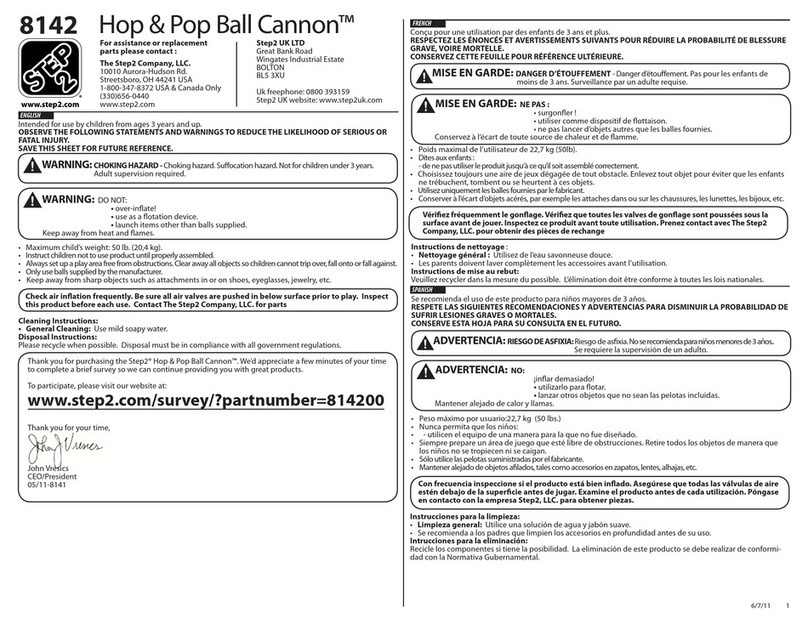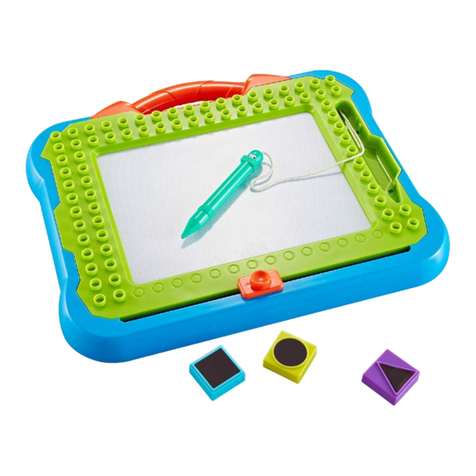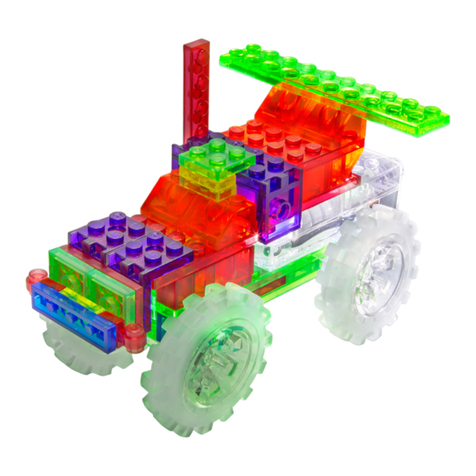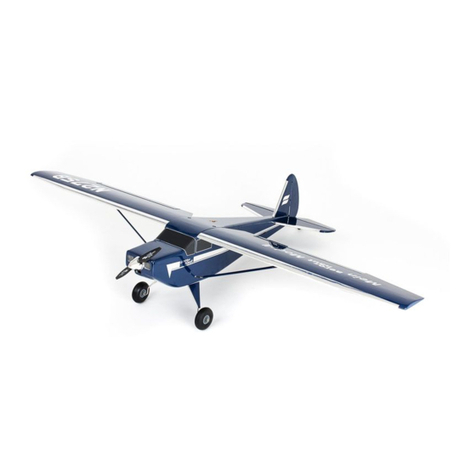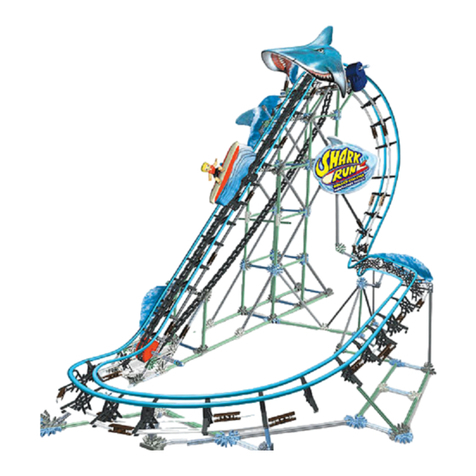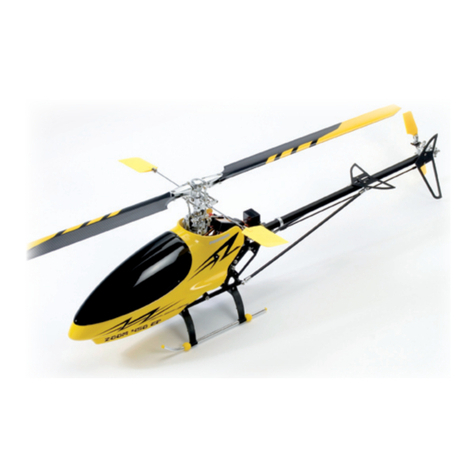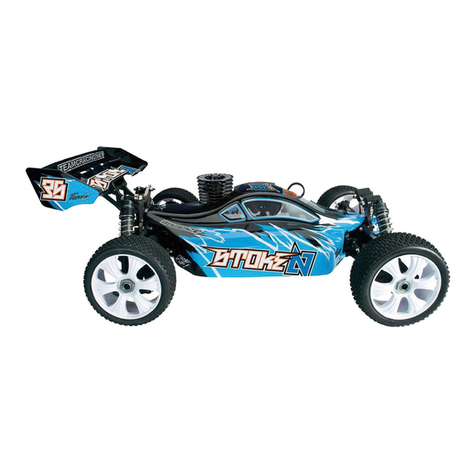Explore Scientific INNOVATIVE DETECTOR CHALLENGE User manual

SCIENCE
INNOVATIVE
DETECTOR CHALLENGE
INSTRUCTIONS
8+
88-90188

SCIENCE
INNOVATIVE
DETECTOR CHALLENGE
P.1
CAUTION!
When experiment is nished, make sure the batteries are disconnected and switch o the unit before you clear away the wires.
Do not apply any components or parts to the unit other than those provided with this kit. Do not lock the motor or other
moving parts. Otherwise it may cause overheating. The toy is not to be connected to more than recommended number of
power supplies.
BATTERY INFORMATION
Use 4 x AA size batteries (not included) For best performance, always use fresh batteries and remove batteries when not in use
Batteries must be inserted with the correct polarity Non-rechargeable batteries are not to be recharged Re-chargeable
batteries are only to be charged under adult supervision Re-chargeable batteries are to be removed from the toy before being
charged Dierent types of batteries or new and used batteries are not to be mixed. Exhausted batteries are to be removed from
the toy The supply terminals are not to be short-circuited Only batteries of the same or equivalent types are to be used Do not
dispose of the batteries in re Do not mix old and new batteries Do not mix alkaline, carbon zinc and re-chargeable batteries
Adult supervision and assistance is required. This unit is only for use by children aged 8 years and older. Not suitable for
children under age 3 years old due to small part(s) and component(s) – CHOKING HAZARD. Read and follow all instructions in
the manual before use. This toy contains small parts and functional sharp points on components. Keep away from children
under age 3 years. 4 x AA size batteries are required (not included) Please retain the information and this manual for future
reference. Instructions for parents are included and have to be observed. Warning. Do not use close to the ear! Misuse may
cause damage to hearing. Do not aim at eyes and face. Do not use improvised projectiles.
WARNING
To understand the working principle of the metal detector, rst you will need to know the relationship between electricity and
magnetism. When an electric current ows through a wire, a magnetic eld will be generated at the same time. So people
round up a wire to form a coil, in order to concentrate the magnetic eld at the center of the coil. When electricity is owing in
the coil, a concentrated magnetic eld will be there. And the reverse holds true: when the coil passes through a magnetic eld,
current will be induced in the coil (if the two ends of the coil are connected). Now this is the basic principle of electricity and
magnetism, called electromagnetism. This metal detector makes use of such principle to detect metallic object. When the ring
(containing the coil) moves near a metallic object, the magnetic eld generated by the coil will induce eddy currents inside the
metallic object. Eddy currents will induce magnetic elds of their own, and there is a second set of coil in the metal detector.
The magnetic elds of the eddy currents will induce electricity in the second coil, so thereby reecting the fact that there is a
metallic object detected! This is the basically working principle of how the metal detector works.
The maze experiment works base on some simple electronic circuit principles. Note that after you have constructed the maze
experiment, no electricity is owing through the kit yet. During the maze experiment, if your wand touches the metal wire,
then the circuit will be connected. The bell will then ring because electricity is owing through the circuit and activates the
motor which makes the spring rod hit the bell. Test your hand skills on the maze experiment by passing the wand through the
maze from one end to the other. If your wand touches the metal wire, the bell will ring. This means you fail in the experiment.
As a result, electric current ows through the circuit and thus the motor will start working and ring the bell. If the wand does
not touch the metal wire, the circuit is not connected and thus no bell ring will be made.
How does the maze experiment work?
How does the metal detector work?

P.2
COMPONENTSCOMPONENTS
How to use
Sensitivity Adjuster
Use the Adjuster to alter its sensitivity. Keep away from metal objects.
To start, push the mode selector to normal mode, then switch on the
sensitivity adjuster in a clockwise direction to activate the metal
detector. Switch the sensitive adjuster to ne-tune its sensitivity, by
doing so the detector will make noise if it’s too sensitive but it will not
react either if it’s not sensitive. You will need to switch to clockwise and
anti-clockwise to nd a sensitive point in between. You might need to
test out a few times to make sure that the adjuster is a the point which
the detector will make noise between noise to no noise level. Right after
the sound disappears is the best sensitivity level to experiment. To test
it you can put a metal piece near the detector ring to see any sound.
Remarks: When you are done experimenting, switch the adjuster to
anti-clockwise direction to the end to turn o the metal detector mode.
2. Game Mode
Push down the Mode Selector. When there is a metal piece near the
detector ring, the spring pole will start rotating, the bell will ring and LED
will shine to indicate it detects a metal piece. When the metal piece is
moved away, the rotation will stop after seconds and LED will go o.
(This mode is used for Model D and Model E)
A S S E M B LYA S S E M B LY
Assembling the Handheld Metal Detector
1Normal
mode
Mode
Selector
2Game mode
1.
2.
3.
Insert 2pcs AA size
batteries to the
battery compartment.
1. Normal Mode
Push up the Mode Selector. When there is a metal piece near the detector
ring, the detector will make noise and LED will light up to indicate that it
detects a metal. When the metal piece is removed from it, noise and LED
will stop. (This mode is used for Model A, Model B and Model C)
There are two modes for the metal detector:
ON
OFF
Sensitivity
Adjuster

P.3
Model B
Assembling the Metal Detector Security Check System - 1
1 2
3 4
Normal
mode
Model A
Let’s go try the Handheld Metal Detector!
Switch the metal detect to “Normal mode” and
adjust sensitivity. You can experiment it on daily life
objects: coins, metal ruler, key …… and etc. Try to
cover the metal piece with a cloth or a piece of
wood. Does it work?

P.4
How to play the Metal Detector
Security Check System - 1
Insert 2pcs AA size batteries to the
battery compartment. Switch the metal
detector to “Normal mode” and adjust
the sensitivity adjuster.
You can use a metal coin and other
materials to test. Try to turn the handle,
when a metal piece has passed
through the ring, the detector
will respond to indicate that it
detects a metal piece.
5 6
7
8
Turn the handle
Normal mode

P.5
1 2
3 4
5
Model C
Assembling the Metal Detector Security Check System - 2
a3
a4
a5
a5
a3
a4
a2
a1
Turn the handle
Normal mode

P.6
a5
a4
a3
a6
a2
a1
a7
Turn the handle
1 2
3
ON/OFF
Switch
Battery
Compartment
Metal
Detector a2
a1
a3 a4
a5 Spring
Connectors
BASIC CONNECTION PRINCIPLE
Wiring connections
Metal Detector - Spring (a1)
Metal Detector - Spring (a2)
ON/OFF switch
Battery Compartment
Spring (a3)
red
red
Spring (a4)
red
red
Spring (a5)
black
black
How to play the Metal Detector Security
Check System - 2
Insert 2pcs AA size batteries to the battery
compartment. Put the metal detector to “Normal
mode”and switch on the ON/OFF switch. Then adjust
the sensitivity adjuster.
You can use a metal coin and
other materials to test. Try to turn
the handle, when a metal piece
has passed through the ring, the
detector will respond to indicate
that it detects a metal piece.
a3
a4
a5
a6
Model D
Assembling the Metal Detector Security Check System -3
Game
mode

P.7
a5
ON/OFF
Switch
Battery
Compartment
a3 a4
a2
a1
a7 a6
Spring
Connectors
Metal
Detector
Bell
Module
Motor
Module
BASIC CONNECTION PRINCIPLE
Wiring connections
Metal Detector - Spring (a1)
Metal Detector - Spring (a2)
Metal Detector - Spring (a7)
ON/OFF switch
Battery Compartment
Motor Module
Spring (a3)
red
red
Spring (a4)
red
red
Spring (a5)
black
black
black
Spring (a6)
red
red
How to play the Metal Detector
Security Check System - 3
Insert 2pcs AA size batteries to the battery
compartment. Put the metal detector to
“Game Mode” and switch on the ON/OFF
switch. Then adjust the sensitivity adjuster.
You can use a metal coin and other materials
to test. Try to turning the handle. So that the
bell rings only when a metallic material has
passed through the ring.
“Metal Detector Security Check System”
is an example like a metal detection security
check system in the airport. When someone
passes through the security check point
hiding a metal knife or gun, then the system
will oset and warn the airport security!
1
5 6 7 8
2 3 4
Model E Assembling the Metal Detector Shooting Game

P.8
a2
a5
a4
a3
a6
a7
a5
ON/OFF
Switch
Battery
Compartment
a3 a4
a2 a1
a7
a6
Spring
Connectors
Metal
Detector
Bell
Module
Motor
Module
11
9
12
10
a3
a4
a5
a6
a1
Game
mode
BASIC CONNECTION PRINCIPLE
Wiring connections
Metal Detector - Spring (a1)
Metal Detector - Spring (a2)
Metal Detector - Spring (a7)
ON/OFF switch
Battery Compartment
Motor Module
Spring (a3)
red
red
Spring (a4)
red
red
Spring (a5)
black
black
black
Spring (a6)
red
red
How to play the Metal Detector
Shooting Game
Insert 2pcs AA size batteries to the battery
compartment. Put the metal detector to
“Game Mode” and switch on the ON/OFF
switch. Then adjust the sensitivity adjuster.
You can use the included metallic object as
a projectile for the game. Test out your hand
skill and try to shoot into the ring through a
distance!
Usually a heavier one will be better to
control. If the metal is too light, it is dicult
to control because a slight variation on the
pressing force will result in a large
dierence in the projectile path.

P.9
You can also try to remove the paper cardboard behind
the ring and use the catapult to shoot the metal piece into
the ring. By launching the catapult, the metal object will
give projectile motion in a parabolic trajectory and the
metal object will y slower with the chance of metal
detector getting higher possibility of detection. When the
metal object passes through the metal detector, the bell
will ring for a few seconds. However, using another way to
pass through the detector like straight line throw to pass
the metal detector, then the possibility of positive
detection will be lowered as the metal is projecting too
fast to detect its existence.
Remarks: The metal detector might not response well
when a metal object passes through if the metal object
soars too fast. This can be common and please try again. If
there is still no response after a few tries, please follow
page two to adjust the sensitivity again.
1 2
3 4
Model F
Assembling the Maze Experiment
a3
a4
a5
a6
a8
a3
a4
a5
a6
a8

P.10
5 6
78
How to play the Maze Experiment
Insert 2pcs AA size batteries to the battery compartment. Turn the switch ON and put the ring of the wand around the metal
wire through the open area of the ring. Keep your hand steady and carefully move the ring of the wand through the metal wire.
If the ring touches the metal wire, the bell will ring and you lose!
Complete the maze to achieve the fastest time against your friends. Bend the metal wire to create dierent levels of diculty.
Please ensure the switch is o and batteries are removed from battery compartment before bending the metal wire.
Fix the metal wire on the spring connectors (a3) and (a8). Connect the wand to the spring connector (a4).
BASIC CONNECTION PRINCIPLE
Wiring connections
Battery compartment
ON/OFF switch
Motor Module
Metal Wire
Wand
silver silver
red
red
red
red
red black
black
Spring (a4) Spring (a5) Spring (a6)Spring (a3) Spring (a8)
a6
a3
a8
a3
a4
a5
a5
a6

Ensure all wires are correctly connected to the battery terminals and spring connectors as stated
in the instruction. Bend the spring connector over and insert the exposed shiny conductor part of
wire into the spring connector. If the circuit does not work, make sure the insulated“plastic”part of
the wire is not obstructing the connection to the spring connector, and make sure the wires are
securely connected.
Warning! Do not short-circuit the battery terminals and spring connectors. Otherwise it may
cause overheating. Do not lock the motor or other moving parts. Otherwise it may cause
overheating.
Spring Connectors
Bell Module
Wand
Motor Module
ON/OFF Switch
Metal Wire
Battery Compartment
a5
a6
a3 a8
a4
P.11
SCIENCE
© 2021 Explore Scientific, LLC.
1010 S 48th Street, Springdale, AR 72762
explorescientificusa.com | 866.252.3811
All rights reserved. Made in China.
If at any time in the future you should need to dispose of this product please note that waste electrical products
should not be disposed of with household waste. Please recycle where facilities exist. Check with your local authority
or retailer for recycling advice. (Waste Electrical and Electronic Equipment Directive)
This manual suits for next models
1
Table of contents
Other Explore Scientific Toy manuals



